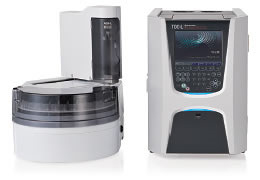Technical Articles

TOC / COD / BOD
TOC (Total Organic Carbon), COD (Chemical Oxygen Demand), BOD (Biochemical Oxygen Demand) are commonly used in water quality analysis of organic pollution indicators, which reflect the content or degradation characteristics of organic matter in the water body from different perspectives.
1. TOC, Total Organic Carbon
Environmental/water quality test indicator measuring the degree of organic contamination in water (in mg/L)
2. COD, Chemical Oxygen Demand (COD)
Indicates the amount of oxidant consumed to oxidize organic matter in water with a strong oxidizing agent (e.g. potassium dichromate) under acidic conditions, converted to milligrams of oxygen (mg/L).
The higher the COD → the more serious the organic pollution of the water body.
Clean water: COD < 15 mg/L (e.g., Class III surface water)
Heavily polluted water: COD > 100 mg/L (e.g., printing and dyeing, paper wastewater)
Wastewater plant: influent COD 400 mg/L, COD reduced to less than 50 mg/L after biochemical treatment (compliance).
River monitoring: COD>40 mg/L, may be blackened and odorized, need to trace back to investigate industrial smuggling.
3. BOD, Biochemical Oxygen Demand (BOD)
An environmental/water quality indicator that measures the amount of oxygen consumed by microorganisms to break down organic matter (in mg/L).
Difference from TOC: BOD measures the amount of oxygen consumed by microorganisms to break down organic matter in water; TOC includes all organic matter (including the hard-to-break-down portion).
When it comes to water quality testing, both TOC and BOD are indicators of pollution, but TOC is more comprehensive and BOD focuses on degradability.
Wastewater plant: use BOD to judge the treatment effect (e.g. influent BOD 200 mg/L, effluent <30 mg/L to meet the standard).
Natural water bodies: BOD>5 mg/L may trigger algae outbreaks and fish kills.
4. BOD₅ (five-day biochemical oxygen demand)
Standard assay: incubate for 5 days at 20°C in the dark and determine the amount of oxygen consumed (BOD₅).
Clean water: BOD₅ < 1 mg/L (e.g. drinking water)
Heavily polluted water: BOD₅ > 10 mg/L (e.g. domestic sewage, industrial wastewater)
| norm | Reflections | detection time | application scenario |
|---|---|---|---|
| COD | Total organic matter (including difficult to degrade) | 2 hours. | Industrial wastewater, regulatory enforcement |
| BOD₅ | biodegradable organic matter | 5 days | Assessment of the self-purification capacity of water bodies |
| TOC | total organic carbon | 10 minutes. | Rapid screening, online monitoring |
1. Definitions and rationale
| norm | full name | principle |
|---|---|---|
| COD | chemical oxygen demand (an environmental indicator) | Oxidize organic and reduced inorganic matter in water under acidic conditions with a strong oxidizing agent (e.g., potassium dichromate) and determine the oxygen equivalent consumed. |
| TOC | total organic carbon | Organic carbon is converted to CO₂ through high temperature combustion or oxidation, and the carbon content is measured directly, reflecting the total amount of organic matter. |
| BOD | biochemical oxygen demand (BOD) | The amount of dissolved oxygen consumed by microorganisms to decompose organic matter at 20°C and 5 days reflects biodegradable organic matter. |
2. Measurement object and scope
| norm | Measurement Objects | Contains non-organic matter? |
|---|---|---|
| COD | Organic matter + reductive inorganic matter (e.g., ferrous, sulfides, nitrites, etc.) | 是 |
| TOC | Carbonaceous organic matter only (excluding inorganic carbon such as CO₂, carbonates, etc.) | 否 |
| BOD | Organic matter degradable by microorganisms (excluding hard-to-degrade organic matter and reducing inorganic matter) | 否 |
3. Measurement methods and timing
| norm | Common methods | take a period of (x amount of time) | disruptive factor |
|---|---|---|---|
| COD | Potassium dichromate method, rapid spectrophotometric method | 2 hours to several hours | Chloride, reducing inorganic interference |
| TOC | Combustion oxidation, wet oxidation | Minutes ~ half an hour | Particulate matter, inorganic carbon require pretreatment |
| BOD | Dilution inoculation method (BOD₅), sensor method | 5 days (standard BOD₅) | Toxic substances, microbial activity effects |
4. Theoretical relations:
COD ≥ BOD (because COD contains both difficult-to-biodegrade organic matter and inorganic matter).
TOC ≤ COD (1g of organic carbon requires approximately 2.67g of oxygen for complete oxidation, but the actual ratio varies depending on the type of organic matter).
BOD/TOC: can reflect the biodegradability of organic matter (the higher the ratio, the easier it is to degrade).
5. Comparison of application scenarios
| norm | Main application scenarios |
|---|---|
| COD | Regulation of industrial wastewater discharges, assessment of wastewater treatment plant efficiency (rapid reflection of total oxidation demand). |
| TOC | Pure water systems (pharmaceuticals, electronics), drinking water safety monitoring (fast and accurate measurement of total organic matter). |
| BOD | Evaluate water body self-purification capacity, wastewater treatment process design (focus on microbial degradation characteristics). |
6. Summary of strengths and weaknesses
| norm | vantage | drawbacks |
|---|---|---|
| COD | Fast and wide coverage; high degree of standardization. | Inability to differentiate between degradable/refractory organics; toxic reagent contamination. |
| TOC | Rapid, non-polluting; direct measurement of organic carbon. | Ignore non-carbon organics; high equipment costs. |
| BOD | Reflects biodegradability in the actual environment. | Time-consuming (5 days); results are strongly influenced by microbial activity. |
RELATED:
TOC-L Series Total Organic Carbon Analyzer

 +86 13917986725
+86 13917986725